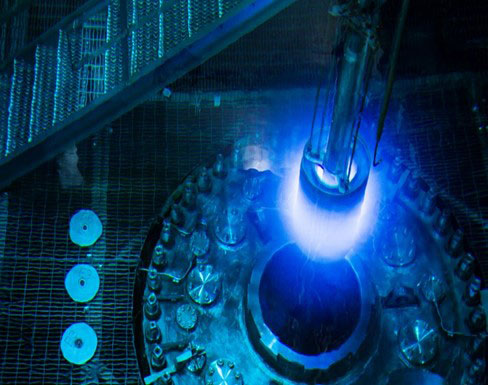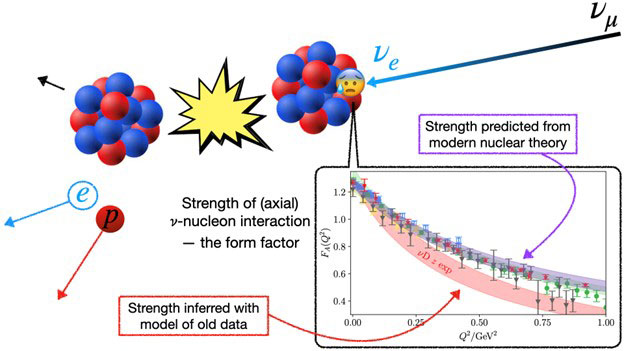Reports
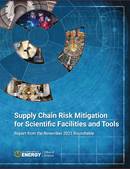
Supply Chain Risk Mitigation for Scientific Facilities and Tools
In November 2021, the U.S. Department of Energy (DOE) Office of Science (SC) convened a roundtable on “Supply Chain Risk Mitigation for Scientific Facilities and Tools” to gather information about current supply chain challenges in key technology areas unique to SC or critical to its mission. The roundtable brought together technical, project management, and procurement experts from DOE national laboratories, industry, academia, and other government agencies. Panelists explored opportunities, possible partnerships, and mechanisms to strengthen the domestic supply chain for critical SC technologies.
PDF of this Report
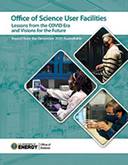
Office of Science User Facilities Roundtable December 2–15, 2020
In December 2020, the U.S. Department of Energy Office of Science convened a virtual Roundtable of its scientific user facilities to discuss facility challenges and lessons learned during the COVID-19 pandemic as well as facility responses, best practices, and innovations that could be adopted going forward. Roundtable participants included facility staff, users, and user executive committee chairs. This report summarizes their discussions, which encompassed topics such as user research and facility operations in virtual and physically distanced contexts; user training and engagement; computation, data, and network resources; and crosscutting issues.
PDF of this Report Report Date: July 2021
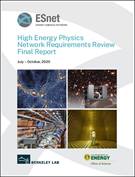
2020 High Energy Physics ESnet Network Requirements Review Report
The Energy Sciences Network (ESnet) is the high-performance network user facility for the U.S. Department of Energy (DOE) Office of Science and delivers highly reliable datatransport capabilities optimized for the requirements of data-intensive science. In essence, ESnet is the circulatory system that enables the DOE science mission by connecting all of its laboratories and facilities in the United States and abroad. ESnet is funded and stewarded by the DOE Advanced Scientific Computing Research program and managed and operated by the Scientific Networking Division at Lawrence Berkeley National Laboratory. Throughout 2020, ESnet and the DOE Office of High Energy Physics (HEP) organized an ESnet requirements review of HEP-supported activities. A requirements review comprehensively surveys major science stakeholders’ plans and processes in order to investigate data management requirements over the next 5–10 years.
PDF of this Report Report Date: June 2021
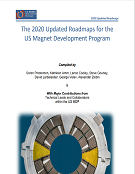
The 2020 Updated Roadmaps for the U.S. Magnet Development Program
The U.S. Magnet Development Program (MDP) is a national R&D collaboration coordinated by LBNL and aimed at advancing high field accelerator magnet technology. The effort began in 2016 in response to the 2015 HEPAP Accelerator R&D subpanel report. The original 2016 MDP Plan was based on four goals that summarized the Subpanel recommendations. A review of MDP held in December 2019 in conjunction with an International Workshop on High Field Magnets served as the starting point for this update to the MDP Plan. The plan remains focused on the original four goals but expands and refines the strategic pathways to these goals. Roadmaps for each strategic thrust identify specific milestones for the next several years in the context of a longer term vision.
PDF of this Report Report Date: October 2020
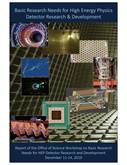
DOE Basic Research Needs Study on High Energy Physics
Detector Research and Development
This report is based on a workshop on Basic Research Needs for High Energy Physics Detector R&D, which was held December 11-14, 2019. The goal of the BRN study was to assess the present status of the HEP technology landscape, and to identify strategic technology areas, aligned with the strengths of the US community, that future long-term R&D efforts should focus on in pursuit of the HEP science drivers identified in the 2014 P5 report. Across each of these areas, the study articulated a set of Priority Research Directions, together with research plans and infrastructure needs, to push the technology well beyond the current state of the art, potentially leading to transformative advances with broad-ranging applicability in HEP and beyond. Furthermore, the study identified a small set of high-impact instrumentation “Grand Challenges” where technological breakthroughs could lead to game-changing experimental capabilities in pursuit of HEP science goals.
PDF of this Report Report Date: August 2020
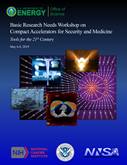
Basic Research Needs Workshop on Compact Accelerators for Security and Medicine
The “Compact Accelerators” Basic Research Needs Workshop was sponsored by DOE-SC, DOE-NA-20, DHS, DOD, and NIH to identify the highest impact applications of accelerator technology for security and medical applications. This workshop brought together an international group of application, industrial, academic, and government experts to discuss the basic R&D needed to advance a wide range of applications. This report documents the use cases and provides an analysis of the technical, economic, regulatory issues and R&D pathway to develop each.
PDF of this Report Report Date: January 2020
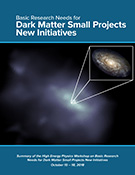
Basic Research Needs Workshop for Dark Matter Small Projects New Initiatives
This brochure is based on a HEP workshop on Basic Research Needs for Dark Matter Science, which was held on October 15-18, 2018. The purpose of the workshop was to identify basic research needs for searching for dark matter particles which could be realized with small projects using current DOE infrastructure and capabilities, with a focus on opening new areas of discovery concerning the nature of matter in the universe and that have the potential to significantly impact science and technology.
JPG Brochure PDF of this Report
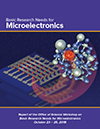
Basic Research Needs Workshop for Microelectronics
This report is based on a workshop on Basic Research Needs for Microelectronics, which was held October 23–25, 2018, and sponsored by ASCR, BES, and HEP. The goal of the workshop was to identify basic research needs associated with advanced microelectronics technologies for applications relevant to the DOE mission, including computing, power grid management, and science facility workloads.
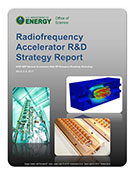
The Committee of Visitors recommended that the Office of High Energy Physics (OHEP) to continue developing research roadmaps for all the General Accelerator R&D (GARD) subprogram research thrusts, similar to those recommended for the by the High Energy Physics Advisory Panel's Accelerator R&D Subpanel. OHEP convened a workshop in March of 2017 to develop research roadmaps for the GARD RF Acceleration Technology thrust to identify HEP mid- and long-term needs that support the P5 strategy and HEPAP Accelerator Subpanel recommendations, and develop a ten-year research roadmap with appropriate milestones and priority. The outcome of this workshop is captured in the Radiofrequency Accelerator R&D Strategy Report.
Report Date: June 2017
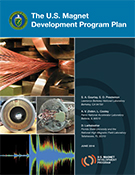
The 2014 Particle Physics Project Prioritization Panel (P5) Report identified a critical need for transformational high field magnet R&D focused on substantially increasing performance and lowering the cost per T-m. This need was subsequently reiterated in the HEPAP* Accelerator R&D subpanel report.
In response, the DOE Office of High Energy Physics has initiated an ambitious program, coordinated by LBNL (see Appendix A), to aggressively pursue the development of superconducting accelerator magnets that operate as closely as possible to the fundamental limits of superconducting materials and at the same time minimize or eliminate magnet training. The U.S. Magnet Development Program (MDP) is based on four goals that summarize the P5 and Subpanel recommendations.
US Magnet Development Program (MDP)
Report Date: June 2016
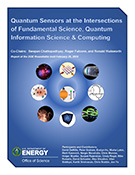
The Offices of High Energy Physics (HEP) and Advanced Scientific Computing Research (ASCR) within the Office of Science at the Department of Energy (DOE) co-sponsored a Roundtable on “Quantum Sensors at the Intersections of Fundamental Science, Quantum Information Science, and Computing” on February 25th, 2016. The meeting brought together leading scientific experts at the “Quantum Frontier”—the rapidly growing and interdisciplinary field of quantum science and technology. Quantum Sensors are an integral part of the holistic and accelerating field of Quantum Information Science (QIS) that spans synergistic interests of multiple federal agencies. This report summarizes the background, opportunities, and challenges at the Quantum Frontier, provides suggestions for maximizing DOE impact in this field, and concludes with several ‘Case study’ reports of highlights from the Quantum Frontier.
Quantum Sensors at the Intersections of Fundamental Science, Quantum Information Science & Computing Report
Report Date: July 2016
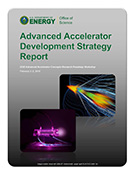
As recommended by the High Energy Physics Advisory Panel's Accelerator R&D Subpanel, the DOE Office of High Energy Physics convened a workshop in February of 2016 to develop research roadmaps for the advanced accelerator concepts R&D with a series of milestones to address outstanding challenges towards the goal for constructing a future multi-TeV electron-positron collider. The outcome of this workshop is captured in the Advanced Accelerator Development Strategy Report.
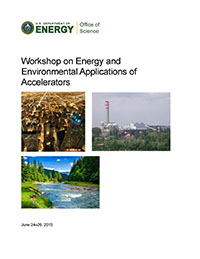
The “Workshop on Energy & Environmental Applications of Accelerators” was sponsored by the DOE Office of High Energy Physics to identify the highest impact applications of accelerator technology to address challenges in this area. Building on information from the preceding RFI, the workshop brought together an international group of application and regulatory experts on water, waste water, sewage, flue gas, environmental remediation, medical waste sterilization to discuss with accelerator technology experts the most promising future applications. This report documents the use cases, economic, regulatory, and technical analysis for a wide array of energy & environmental applications of accelerators.
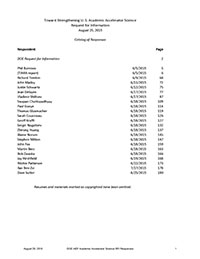
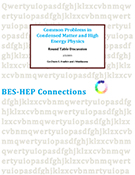
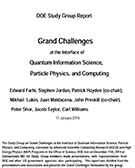
A Study Group convened jointly by the Office of Advanced Scientific Computing Research (ASCR) and Office of High Energy Physics (HEP) in the Office of Science, DOE, met in Germantown, MD on December 11th, 2014. The Group was charged by the Associate Directors of both Programs to identify Grand Challenges, Opportunities, and Gaps in Research at the intersections of Quantum Information Science (QIS), Particle Physics, and Computing, including exploiting quantum systems, probing innovative future technologies, and using QIS as a window to the Universe. Their report presents a set of Grand Challenge questions along with potential paths forward for advancement of associated technology and fundamental science insight.
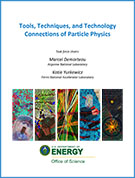
The “Tools, Techniques, and Technology Connections of Particle Physics” report showcases some of the key tools, techniques, and technologies that connect particle physics to other science disciplines, to industry, and to society as a whole. Developed in response to a charge from the DOE’s Associate Director for the Office of Science, Office of High Energy Physics, Dr. James Siegrist, this report identifies potential opportunities for advancing scientific discovery and accelerating the pace of innovation in an effective manner by taking advantage of science and technology connections.
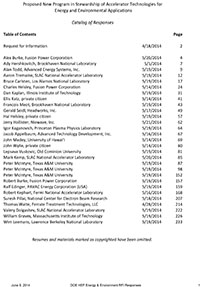
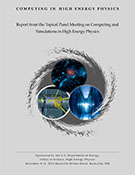
A topical panel meeting was held in December 2013 to address the varied yet synergistic needs of computation and simulation across the field of particle physics, including the challenges of rapidly evolving computer architectures and technology. Participants represented a broad spectrum of scientific and computational expertise across the DOE-HEP community as well as external to it. Click here for the report.
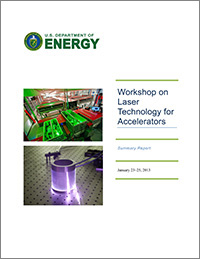
The “Workshop on Laser Technology for Accelerators” was sponsored by the DOE Office of High Energy Physics to identify the technology needs and required R&D for this key supporting technology. An international group of experts in the application, design, and manufacturing of ultrafast lasers was assembled to identify R&D that can bridge the gaps between current laser system capabilities and future requirements. This report identifies future laser developments that would contribute to the advancement of accelerator- and laser-enabled science.
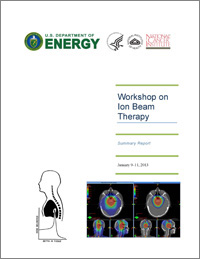
The "Ion Beam Therapy Workshop" was jointly sponsored by the DOE Office of High Energy Physics and the NIH National Cancer Institute to identify the biological, clinical, and technological issues to be addressed realize the full potential of ion beam therapy of cancer. An international group of experts in radiobiology, clinical radiotherapy, and accelerator technology met over three days to identify the key issues and R&D gaps between current accelerator capabilities and future requirements.
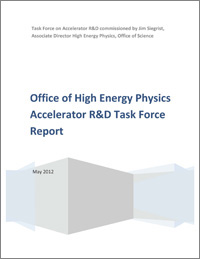
The “Accelerator R&D Task Force Report” documents input from a year-long intensive community-based process to respond to the challenges and recommendations in the Accelerators for America’s Future report. The report contains the task force's perspectives on the wide-ranging, useful applications of accelerators, accelerator-related innovations within our reach and the cooperation needed between national laboratories, industry and government agencies.
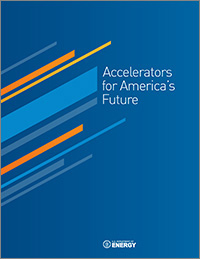
The "Accelerators for America's Future" symposium and workshop In 2009, the Department of Energy's Office of Science launched an initiative to encourage breakthroughs in accelerator science and their translation into applications for the nation's health, wealth and security. Experts from across the spectrum of accelerator applications identified opportunities and challenges for particle beams in Energy and Environment, Medicine, Industry, National Security, and Discovery Science. The report captures their perspectives, insights and conclusions, informing a national program to put accelerators to work on the challenges of our time.

